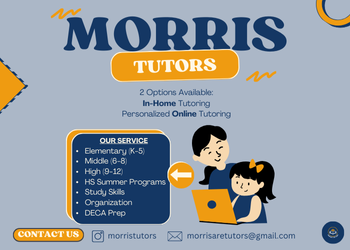In Malaysia, many working parents face a daily struggle: how to support their children’s growth while also looking after their own well-being. For many, the idea of raising happy, independent kids while also staying emotionally and physically well may feel out of reach.
But parenting does not have to come at the cost of personal health. It’s possible to support your child’s development without pushing yourself aside.
This article looks at how small, consistent efforts can help you guide your child’s growth — while also helping you stay steady, focused, and well. The approach here is simple: take care of the basics, stay intentional, and make space for both your child and yourself.
1. Set the tone with balanced meals
Children often model what they see. If you eat a variety of foods and enjoy mealtimes, they are more likely to do the same. You don’t need to follow strict meal plans. Just aim for balance — include fruits, vegetables, grains, and proteins across the week. Let your child help pick groceries or pack lunch. This gives them a sense of choice and helps them learn.
For parents, eating well supports focus and stable energy. Creating shared mealtimes also encourages connection and helps establish a calmer daily flow. Focus on nourishment, not perfection. Consistency matters more than a flawless food plan.
2. Stay consistent with wellness habits that support your energy
Your own wellness habits directly affect how you manage each day. Start with the basics — drink enough water, move your body daily, and eat in regular intervals. It’s easy to skip meals or rely on convenience foods during busy periods, but simple, balanced eating can support steadier energy and better focus.
Some people also choose to include supplements from brands like USANA Health Sciences as part of their personal lifestyle routine. These supplements are designed to support and maintain already balanced body systems, especially when paired with a nutritious diet and balanced daily habits. Decisions around supplementation should reflect your own preferences and needs, as part of a consistent approach to wellness.
3. Make room for shared curiosity
Children learn best when they explore, ask questions, and try new things. You can support this by joining them in simple activities. You don’t need to be a teacher. Just being curious together can have a big impact. Try planting herbs, cooking a new meal, or reading a short article about space or animals.
These shared activities build your child’s confidence [1] and spark learning. At the same time, they help you stay mentally active and present. They can also break up the routine and bring a little joy into your day. Keep it casual and fun. Follow your child’s interests, and let them take the lead sometimes.
4. Build simple routines that stick
Children thrive on predictability. When the day follows a steady rhythm, they feel secure and less anxious. You don’t need to plan every moment. Just having small, reliable routines — like eating breakfast together, having a set time for homework, and winding down the day with a story — can give your child structure without stress.
These routines also benefit you as a parent. When you know what’s next, it reduces the need to make constant decisions throughout the day. It becomes easier to find time for your own tasks or quiet moments. Keep the routines realistic. If mornings are hectic, try prepping the night before. If evenings are busy, even 10 minutes of undistracted time with your child can help.
5. Create safe spaces for open conversations
Children need to feel heard. When they can talk freely about their thoughts and feelings, they grow more confident. Try to check in with your child regularly, even if it’s just a few minutes at bedtime. Ask open questions like “What was your favourite part of the day?” or “Did anything feel hard today?”
When parents listen without judgement, children are more likely to share. This also helps them learn how to express themselves clearly. For parents, these talks offer insight into your child’s world — which can help you respond more calmly and stay connected, even on busy days.
6. Use calm consistency when setting rules
Boundaries help children feel safe. They give structure and reduce confusion. But rules don’t need to be harsh. Consistency matters more than strictness. For example, if screen time ends at 8pm, try to follow through every day. If toys must be picked up before bed, make it part of the routine — not a punishment.
Being calm and clear helps children understand what’s expected without feeling stressed. For you as a parent, it means fewer power struggles. It also helps your home feel more peaceful. Over time, children learn self-discipline and take more responsibility for their own actions.
7. Limit screen time with practical, family-friendly swaps
Technology is part of modern life, but it shouldn’t replace real connection. Setting simple limits for screen use can help children stay engaged with their surroundings. You could have “screen-free” blocks each day — like during meals or before bedtime — and fill those times with light, enjoyable activities.
Try easy swaps like board games, drawing, or outdoor walks. These don’t need planning or cost. What matters is making room for interaction. You’ll also benefit from more meaningful time together. When screen use is managed calmly and clearly, it becomes easier to maintain the balance long term.
8. Focus on your own rhythm — not what others are doing
Comparison often leads to pressure. Social media, school chats, or parenting blogs may show a version of life that feels polished and perfect. But what works for another family may not suit yours. Trust your own rhythm and the choices that reflect your values, priorities, and daily realities.
It helps to pause and check in with your goals once in a while. What matters most to your family right now? What helps your child feel supported? What helps you stay calm and grounded? There are many ways to raise well-rounded children, and your path doesn’t need to match anyone else’s.
You don’t need to choose between your child’s well-being and your own. A balanced family life comes from small, thoughtful habits that support growth, presence, and care — for everyone in the home. Routines, shared moments, emotional connection, and realistic boundaries create a stable space where children can thrive and parents can feel centred.
By taking care of yourself along the way, you become a more focused, patient, and present guide for your child. Wellness is not something extra to squeeze in — it’s something you build into the way your family lives each day.













